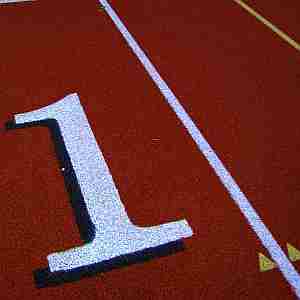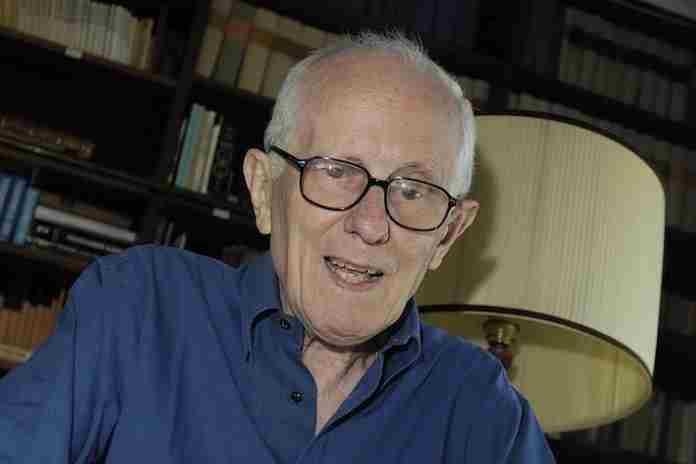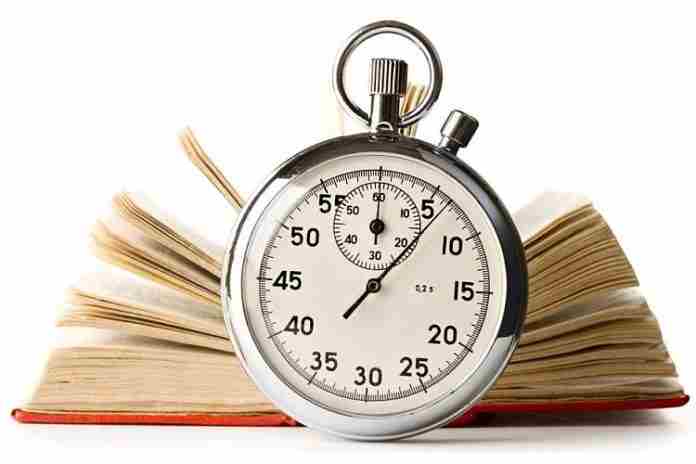 This is a very personal column, about the lives of a few men who made an enormous difference in sport, and who were my friends. And of the passing of a slender giant last Monday.
This is a very personal column, about the lives of a few men who made an enormous difference in sport, and who were my friends. And of the passing of a slender giant last Monday.
Imagine living in the early 19th Century, and having known John Adams and Thomas Jefferson, who both died on 4 July of 1826. These two men were key players in creating a new political concept, a new country that was – even at the time of their passing – playing an expanding role in the world.
Their impact was enormous and lasting. In a much smaller way, in the field of sport, so were two men – later aided by others – who literally created the field of statistics in international sport. Their names were Don Potts, an American mathematician, and Robert Quercetani, an Italian sportswriter.
The millions of dollars now spent on keeping statistics and calculating world rankings in track & field, in swimming, canoeing, cycling, figure skating, modern pentathlon, rowing, speed skating, triathlon and many other sports, started with them.
After World War II, the sports world was beginning to reassemble itself. Track & field, which had been the pre-eminent Olympic sport since the Games were revived in 1896 in Athens, had been essentially dead since 1939. There were records, but how accurate were they?
There were sports statistics in those days, mostly about baseball, which had benefited enormously from the introduction of the box score by New York sportswriter Henry Chadwick, beginning in the late 1850s. In the aftermath of the horror of war, two men in their mid-20s began a correspondence that created a small booklet in 1948 that changed everything.
Both were born in 1922. Potts, who had just finished receiving his Doctorate in Mathematics from the California Institute of Technology, and Quercetani, the Italian sportswriter from Florence deeply devoted to collecting track & field results, somehow found each other by mail in 1946 and eventually collaborated on a 72-page collection of numbers entitled, A Handbook on Olympic Games Track and Field Athletics in advance of the 1948 Olympic Games in London.
Printed in Evanston, Illinois and priced at $1.50, it was the first-ever publication to chronicle the entire sport, just as it is today. There were record lists for the Olympic Games, for the U.S. and for Europe, the top 20 or so performers from 1947 and the first-ever 100-deep list of the all-time best performers in each event, as of the end of 1947. In the introduction, Potts and Quercetani noted:
“The following list of the best track and field marks of all time has been compiled by us from our own collection of track statistics. We have tried to make it as complete and accurate as possible, emphasizing the latter point. (That is to say, we have not included marks concerning which we were doubtful.) We feel that out list is bound to be incomplete, and we sincerely hope that other interested track followers who know of additions and corrections will pass them on to us, so that we may make future editions of this list truly complete and accurate.”
The lists were way ahead of their time, and owing to Potts’ training as a mathematician, included an amazing new concept of time “conversions” between marks made at metric and English running-event distances. Those original calculations mostly hold true today, more than 70 years later.
That was the start. It was a labor of love and Potts told me decades later that the book didn’t really make any money, but essentially paid for itself. The idea hatched by their two men took off quickly. In 1950, Quercetani and 10 others – including Potts – founded the Association of Track & Field Statisticians (ATFS) in Brussels, with the help of another devoted statistician, Swiss track nut Fulvio Regli. A year later, the ATFS published its first annual, with 128 pages of lists of best marks from around the world for 1950, in addition to lists of records, national championships results and all-time best marks.
Wrote Quercetani 50 years later in the 2000 ATFS Annual, that although the compilation efforts in the early days were almost all by mail, “it was, believe me, GREAT FUN. Even the ‘discovery’ of a minor detail was enough to fill us with joy and encourage us towards greater efforts. We were setting foot in what was generally, if not entirely, no-man’s land.”
From that start, the ATFS continues today, with a few hundred members, spread among countries all around the world, but the Annual is now 592 pages long. After the founding of Track & Field News in 1947, Potts and Quercetani were asked in 1948 by founders Bert and Cordner Nelson to take over an annual set of rankings of the top performers in each event at the end of each year, based not solely on time, but on honors won, head-to-head results against others and the sequence of marks during the year. The T&FN World Rankings were – and are today – the gold standard in the sport and have been copied by others, but never equaled or surpassed.
Neither Potts nor Quercetani were ever track statisticians for a living. Potts had an outstanding career as an academic, teaching at Northwestern, Cal State Long Beach, UC Santa Barbara and then joined what is now Cal State Northridge in 1965, eventually becoming the head of the Mathematics Department. He was deeply involved in the early days in computer science at Northridge and might have been the first to use computers to help compile track & field lists.
Quercetani was a sportswriter and was a familiar byline in Italy in the major publications of the day, including the famous La Gazzetta dello Sport newspaper – for years immediately recognizable by its pink front page – and for many sports magazines, as well as for Track & Field News in the U.S.
He wrote many books about the sport, including the brilliant Athletics: A History of Modern Track & Field Athletics (1860-1990), and many others. But last Monday (13th), we lost him at the age of 97, survived by his wife, Maria Luisa. He had suffered a fall during the previous week and had been in the hospital since then, until his passing.
Potts died in 2001, and two other men who helped Potts advance his work in the U.S. tremendously, have also passed: Stan Eales in 1984, and Scott Davis in 2010. The latter two men were also outstanding public address announcers whose voices were well known to track & field fans all along the West Coast.
I knew all four and they all had a positive impact on my life. Their greatest gift was their enthusiasm for the sport they loved – track & field – and their encouragement to make my own contribution.
Potts explained in detail how he and Quercetani created the field from nothing because they wanted to share their interest in the sport. Eales helped me – very quietly – to apply to work for the Los Angeles Olympic Organizing Committee in 1980, which became the most important experience in my life (so far). And Davis, who was a very close friend, shared his joy for the sport and contributed so much to it that no one person has ever been able to replace him.
I only met Quercetani a few times, during trips to Europe in the 1980s. He was a true gentleman, soft-spoken but resolutely excited about new projects we discussed, on technical issues concerning the sport and he was, at all times. a man of dignity, warmth and class.
He and Potts, now free to roam among history’s souls, are undoubtedly sharing eternity with the greats who have preceded them, like Lon Myers, Jesse Owens, Paavo Nurmi and so many others. It’s our job to ensure that their legacy continues, and with the expansion of sports betting that will undoubtedly engulf Olympic sports in the future, what they started will likely be expanded to levels they never dreamed of.
For now, I’m happy to say I knew the giants on whose shoulders the field of international sports statistics were founded. Rest in peace, Roberto, and say hi to Don, Stan and Scott for me.
Rich Perelman
Editor
/Update: This story was amended to reflect that Quercetani and Potts headed the Track & Field News world rankings program beginning with the 1948 season, not in 1947; those rankings were done by T&FN founder Cordner Nelson. Thanks to T&FN Managing Editor Garry Hill for the correction./


























